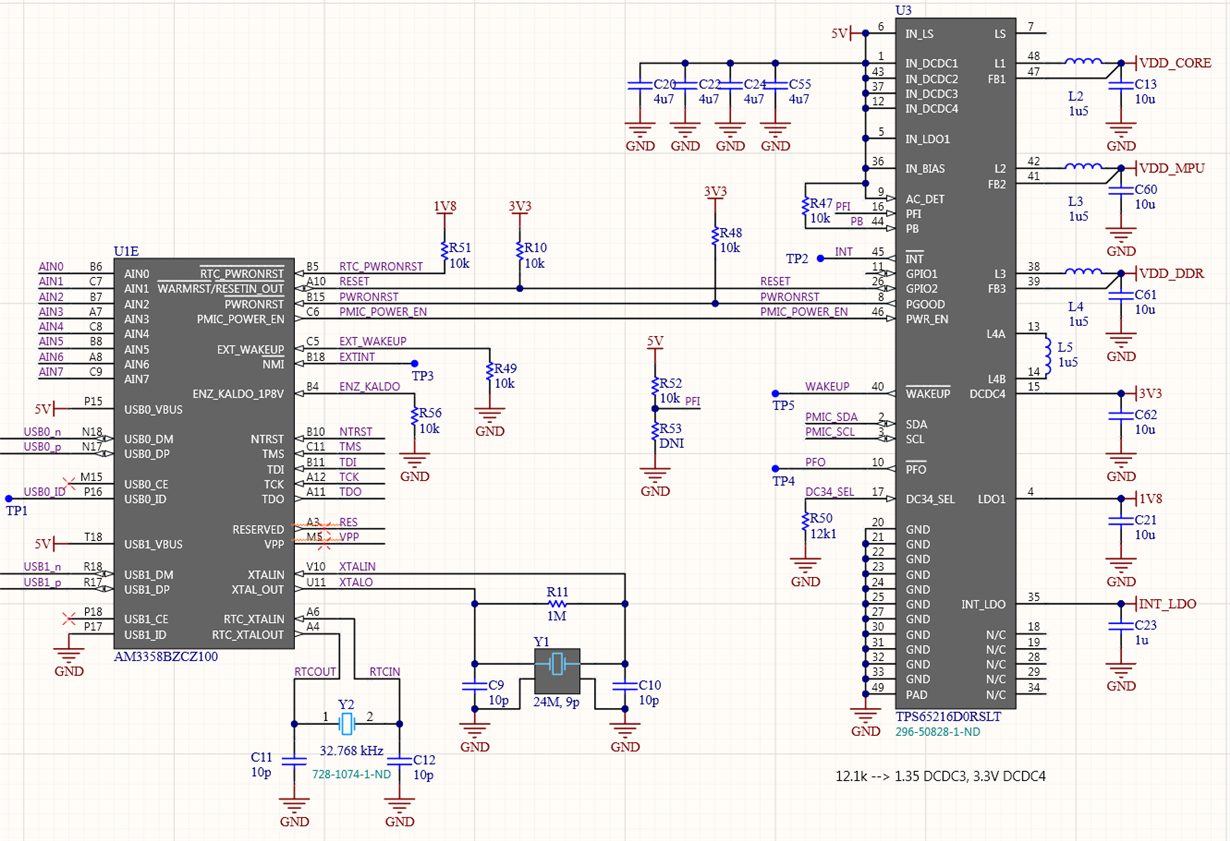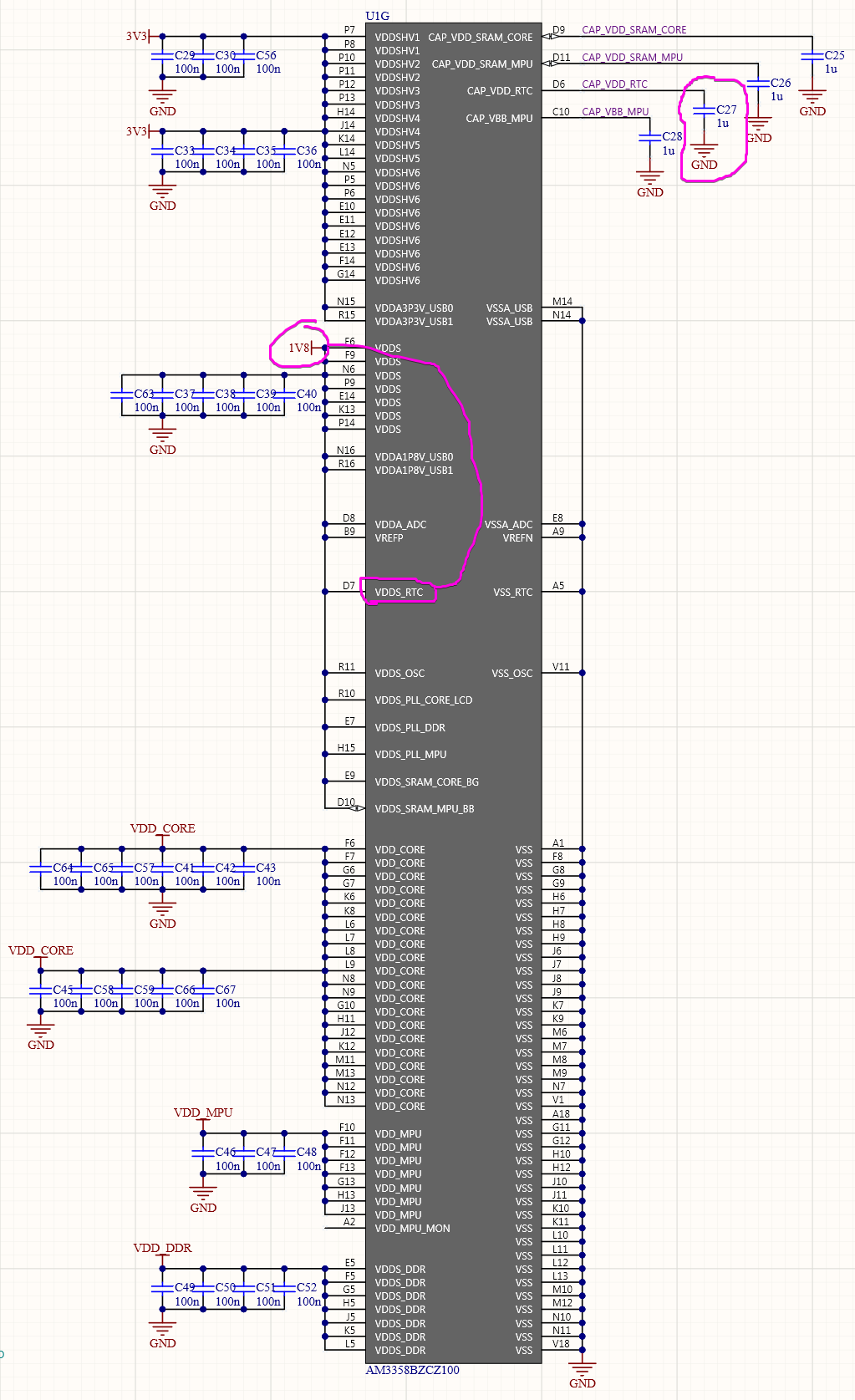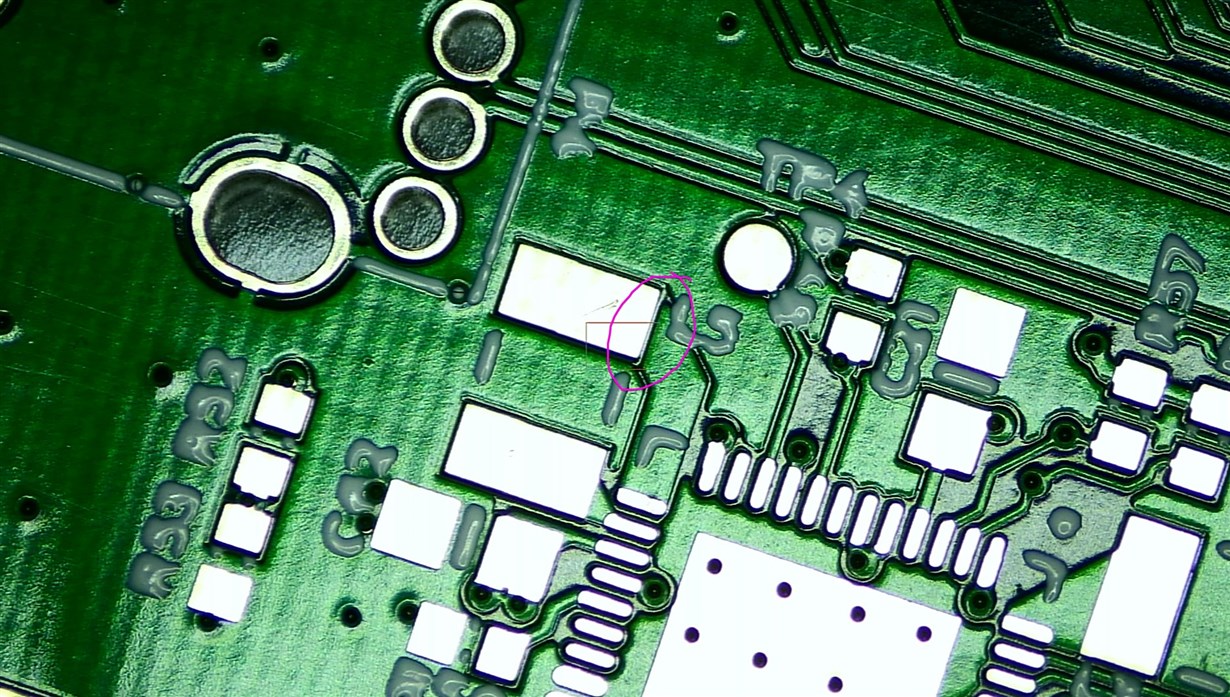I'm building a simple AM335x-based system using the TPS65216D0 powered from an external 5V source, but it's failing to power on.
I had planned on having the system power on immediately (since it's not a battery-operated device), so I tied AC_DET high (since the datasheet says "Tie pin to IN_BIAS if not used") — only to realize later on that I actually want to tie the pin to GND to get the system to power up immediately. I'll fix this bug on the next release, but I'm trying to get this board working now.
Luckily, I had the PB signal broken out and pulled up to 5V, so I attempted to power it on by shorting the signal to GND. When I do that, I see that INT_LDO rises to 2.5V (as it's supposed to do), but when I release the PB signal, INT_LDO goes back to GND and none of the other rails come up. I've tried touching the PB signal to GND for ~1 second, as well as for ~10 seconds.
I have PWR_EN connected to my processor, but I don't have a good place to probe it or drive it.
Any suggestions for next steps?
Here's my schematic:








